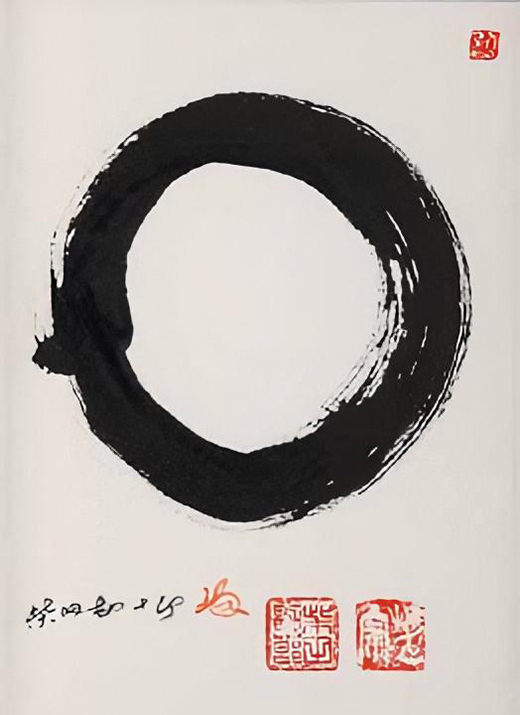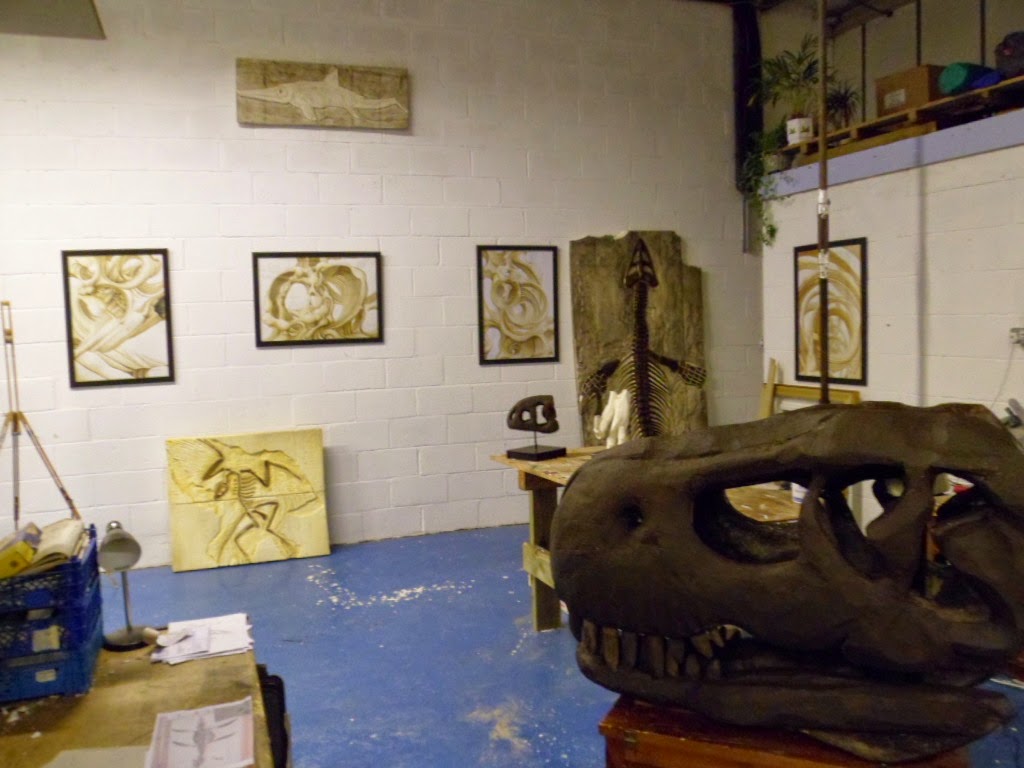so many people come into shows / exhibitions and gallery settings where I am hosting or holding public display event... and ask the same question ......
'' What are the swirly ones ?? ''
honestly .. originally I had no idea .. it was just an extention of the basic instinctive doodle ... massively influenced by the forms and structures and patterns of the wilderness I was growing up in.
…. later on ... the internet turned up !! and people started ascribing ' values ' to the ever developing swirls that were evolving according to the various values of stimuli I was continueing to expose my self to in order to ' render a lifetime's tapestry of experience ' in the interest of better knowing myself ....
art being a reflection of life .... and as the body of work progressed so too did the broad reach of the international arts networks via the mediums of social media .. and the references and cross references that went with it ....
no longer an unusual and exceptional oddity .... it turns out that many corners of the creative meridians have been having seemingly spontaneous compulsions as me .....
age old question of plaigerism ? or eveidence of a collective consciousness pre internet revolution ??
Fibonacci number
The beginning of the sequence is thus:
In some older books, the value is omitted, so that the sequence starts with , and the recurrence is valid for n > 2.[3][4]

The Fibonacci spiral: an approximation of the golden spiral created by drawing circular arcs connecting the opposite corners of squares in the Fibonacci tiling;[5] (see preceding image)
Fibonacci numbers are named after Italian mathematician Leonardo of Pisa, later known as Fibonacci. In his 1202 book Liber Abaci, Fibonacci introduced the sequence to Western European mathematics,[6] although the sequence had been described earlier in Indian mathematics,[7][8][9] as early as 200 BC in work by Pingala on enumerating possible patterns of Sanskrit poetry formed from syllables of two lengths.
Fibonacci numbers appear unexpectedly often in mathematics, so much so that there is an entire journal dedicated to their study, the Fibonacci Quarterly. Applications of Fibonacci numbers include computer algorithms such as the Fibonacci search technique and the Fibonacci heap data structure, and graphs called Fibonacci cubes used for interconnecting parallel and distributed systems.
They also appear in biological settings, such as branching in trees, the arrangement of leaves on a stem, the fruit sprouts of a pineapple, the flowering of an artichoke, an uncurling fern, and the arrangement of a pine cone's bracts.
Fibonacci numbers are also closely related to Lucas numbers , in that the Fibonacci and Lucas numbers form a complementary pair of Lucas sequences: and .
Contents
- 1History
- 2Applications
- 3Mathematics
- 4See also
- 5References
- 6External links
- Between 1995 and 2006, Lucent Technologies used a red ensō logo, designed by Landor Associates,[2] meant to convey creativity and urgency.[3]
- A variation of the symbol was also used as a logo by Obaku Ltd.. They continue to use an ensō shape as a wristwatch brand.
- Thinking, an international design and consulting house centred in London, uses an ensō[4] meaning "Expression" as one of their four icons, along with icons for science, pattern and vision.
- Philosopher Joseph Campbell's book, The Hero with a Thousand Faces, bears this symbol on its cover representing creativity and uninhibited freedom of expression within art/literature.
- The book The Lean Startup uses an enso on the cover. One of the concepts in the approach includes a learning cycle 'Build - Measure - Learn".
- The design of Apple Campus 2, Apple Inc.'s ring-shaped corporate headquarters, might also have been inspired by the ensō.[5]
- AMD uses an ensō in the marketing of its Ryzen processors with the Zen microarchitecture.
- MINDBODY prominently features an ensō in its company logo.
- KOAN Sound uses an open ensō in their logo as the 'O' character.
- The Ensō bootloader vulnerability that allows the HENkaku exploit in PlayStation Vita consoles to run permanently uses an ensō as its logo.
- Abstract expressionism, a 20th-century American art movement
- Buddhism in Japan
- Dhyāna in Buddhism, a meditation practice in which the observer detaches from several qualities of the mind
- Ink wash painting, an East Asian style of brush painting that uses black ink
- Ouroboros, an ancient symbol depicting a serpent or dragon eating its own tail
Ensō
This article needs additional citations for verification. (February 2017) (Learn how and when to remove this template message)
|

Ensō (c. 2000) by Kanjuro Shibata XX. Some artists draw ensō with an opening in the circle, while others close the circle.
Description[edit]
The ensō symbolizes absolute enlightenment, strength, elegance, the universe, and mu (the void). It is characterised by a minimalism born of Japanese aesthetics.Drawing ensō is a disciplined-creative practice of Japanese ink painting—sumi-e (墨絵, "ink painting"). The tools and mechanics of drawing the ensō are the same as those used in traditional Japanese calligraphy: One uses a brush (筆, fude) to apply ink to washi (a thin Japanese paper).
The circle may be open or closed. In the former case, the circle is incomplete, allowing for movement and development as well as the perfection of all things. Zen practitioners relate the idea to wabi-sabi, the beauty of imperfection. When the circle is closed, it represents perfection, akin to Plato's perfect form (Plato), the reason why the circle was used for centuries in the construction of cosmological models, see Ptolemy.
Usually, a person draws the ensō in one fluid, expressive stroke. When drawn according to the sōsho (草書) style of Japanese calligraphy, the brushstroke is especially swift. Once the ensō is drawn, one does not change it. It evidences the character of its creator and the context of its creation in a brief, continuous period of time. Drawing ensō is a spiritual practice that one might perform as often as once per day.[1]
This spiritual practice of drawing ensō or writing Japanese calligraphy for self-realization is called hitsuzendō (筆禅道, "way of the brush"). Ensō exemplifies the various dimensions of the Japanese wabi-sabi perspective and aesthetic: Fukinsei (asymmetry, irregularity), kanso (simplicity), koko (basic; weathered), shizen (without pretense; natural), yugen (subtly profound grace), datsuzoku (freedom), and seijaku (tranquility).
Use outside of Zen Buddhism[edit]
See also[edit]
| Wikimedia Commons has media related to Enso circle. |
Geometric art
(Redirected from Geometric pottery)
Geometric art is a phase of Greek art, characterized largely by geometric motifs in vase painting, that flourished towards the end of the Greek Dark Ages, circa 900 BC – 700 BC. Its center was in Athens, and from there the style spread among the trading cities of the Aegean.[1] The Greek Dark Ages are also called the Geometric period in reference to this characteristic pottery style, although the historical period is much longer than the art-historical period, being circa 1100 – 800 BC.[2] The vases had various uses or purposes within Greek society, including, but not limited to, funerary vases and symposium vases.
About the Signature paintings ....
The anima and animus, in Carl Jung's school of analytical psychology, are the two primary anthropomorphic archetypes of the unconscious mind, as opposed to both the theriomorphic and inferior function of the shadow archetypes, as well as the abstract symbol sets that formulate the archetype of the Self. The anima and animus are described by Jung as elements of his theory of the collective unconscious, a domain of the unconscious that transcends the personal psyche. In the unconscious of a man, this archetype finds expression as a feminine inner personality: anima; equivalently, in the unconscious of a woman it is expressed as a masculine inner personality: animus.
The Shadow is a very common archetype that reflects deeper elements of our psyche, where 'latent dispositions' which are common to us all arise. It also reflects something that was once split from us in early management of the objects in our lives. It is, by its name, dark, shadowy, unknown and potentially troubling. It embodies chaos and wildness of character. The shadow thus tends not to obey rules, and in doing so may discover new lands or plunge things into chaos and battle. Shadow may appear in dreams, hallucinations and musings, often as something or someone who is bad, fearsome or despicable in some way. Encounters with it, as an aspect of the subconscious, may reveal deeper thoughts and fears.
The Shadow is a very common archetype that reflects deeper elements of our psyche, where 'latent dispositions' which are common to us all arise. It also reflects something that was once split from us in early management of the objects in our lives. It is, by its name, dark, shadowy, unknown and potentially troubling. It embodies chaos and wildness of character. The shadow thus tends not to obey rules, and in doing so may discover new lands or plunge things into chaos and battle. Shadow may appear in dreams, hallucinations and musings, often as something or someone who is bad, fearsome or despicable in some way. Encounters with it, as an aspect of the subconscious, may reveal deeper thoughts and fears.
Jungians warned that "every personification of the unconscious - the shadow, the anima, the animus, and the Self - has both a light and a dark aspect....the anima and animus have dual aspects: They can bring life-giving development and creativeness to the personality, or they can cause petrification and physical death
''The original premise of the ' signature work ' was really developed at quite a young age ... indeed I have been producing ' the Signature works ' for over 25 years now ... each new body or thread of work, an independent reflection of a parallel thought process ... but very much a component to a much broader body of work ... a lifes work I guess ....
Although I do personally very much ascribe to the notion that anything that has been done by a human hand , can be replicated ... this has been the optimistic philosophy that I have taken into every facet of my work ... and quite often in the tumult of some enormous project or another ... and this is what has now lent that persistent and quite remarkable element to the obviously durable body of work by an artsts that has certainly proven his tenacity and determination to maintain an exceptionally diverse yet accomplished portfolio ...... i was not able to access great reference from the rural and underfunded aspects of the cut off geography that I grew up in - beautiful as it was and does remain ( to a sadly, seemingly ever diminishing degree,) ....pre interenet - pre degree - i was instinctivly working in these mediums from my young teenage years - and it seems will continue to do so
the twenty year plight of being perpetually underfunded or rendered to a state of transcience in a near perpetual state of partially voluntary voluntarism ..... is really begining to start to feel ' the norm ' ''
so buy some freakin art and / or book a class ..... because there is more going on here than the obvious ... and its being done well rather an unusual thing in this day and age x x x




























No comments:
Post a Comment